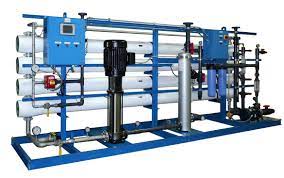How water softeners work
You may have wondered how water softeners work. You get mineral-rich hard water, but in the end you get soft, clean-tasting water with no aftertaste.
Water softeners help us prevent stains on dishes and appliances, clogged water heaters, clogged pipes, sinks, and other metals, and improve the purifying properties of water. Not surprisingly, many people wonder how water softeners work. These devices make the huge amount of water we use every day much easier.
Most water softeners use ion exchange to remove minerals dissolved in hard water and produce cleaner water without any aftertaste. Some minerals that can cause problems in water are calcium, iron, sulphur and magnesium.
Your water softener contains a lot of small plastic balls in a matrix called zeolite. These are coated with sodium ions. When water passes through the beads or zeolite, the unwanted minerals are exchanged for sodium. This leaves more sodium in the water but removes other minerals. Eventually, the zeolite or beads stop holding sodium ions and need to be renewed.
Regeneration is an essential part of the water softeners’ job. During this process, the zeolite beads are soaked in a solution containing sodium ions. A very common solution is household brine – a strong brine is prepared to regenerate the plasticizer. After regeneration of the beads or zeolite, the remaining brine and mineral residues can be rinsed away. One water softener can produce a lot of brine if it needs to be recharged!
However, this method means that the softeners add brine to the water produced. For people on a low-sodium diet, this can be a problem. Sometimes alternative salts such as potassium chloride are used to avoid this problem.
Anyone who needs to limit their sodium intake and wants to use a water softener should talk to their doctor about what additional minerals, sodium or potassium, they may be taking. Some water softeners do not use salt at all, but work by using carbon filters or some other method that removes unwanted minerals from hard water. These are usually much more expensive than traditional softeners.
Once the softener has been regenerated, it is ready for use again. Some systems regenerate automatically and only need to be refilled with salt. Other systems, such as portable softeners, run until they run dry and then stop working until they are manually regenerated. Whatever water softening method you use, it’s important to maintain it properly so it serves you effectively for years to come.
Once you know how water softeners work, it’s time to choose the best water softener for your home. Detailed water softener reviews on the website waterlogic.pk will help you make the right choice.

